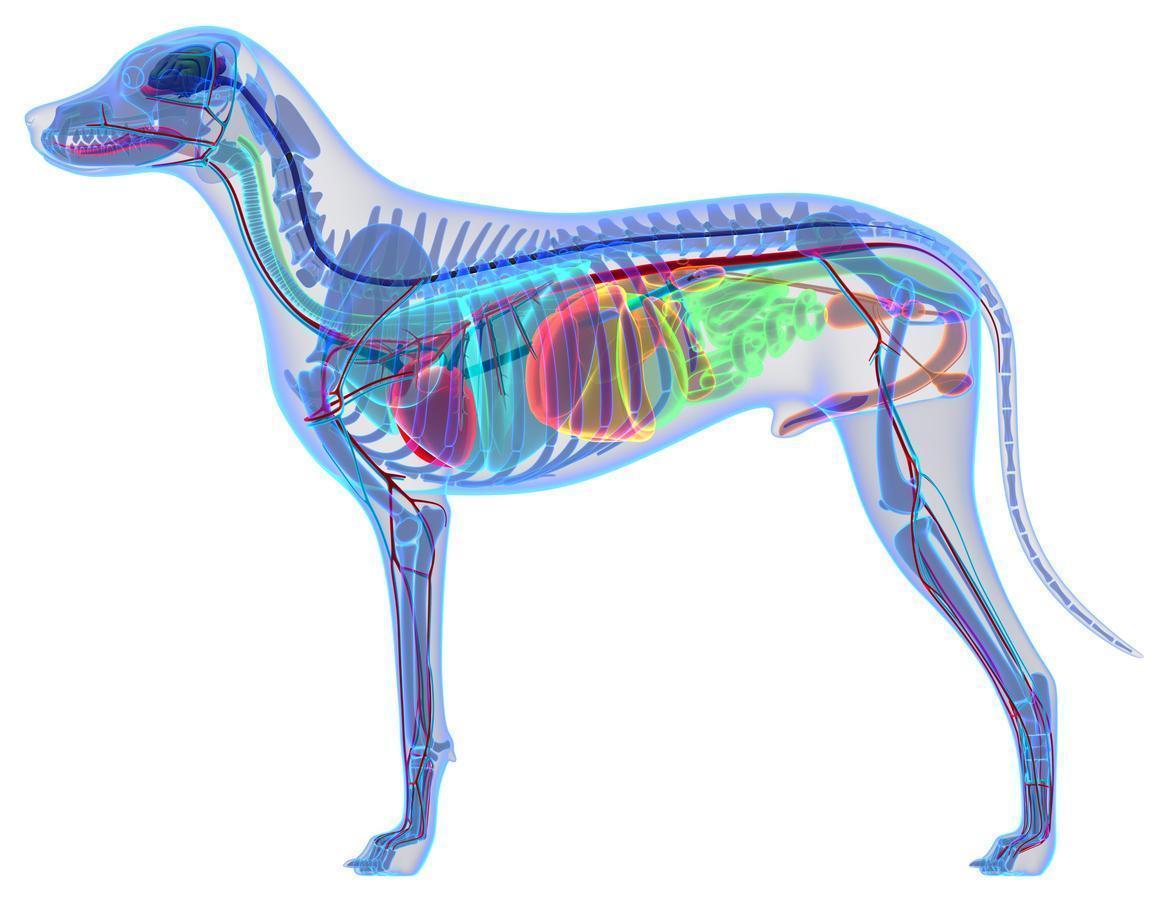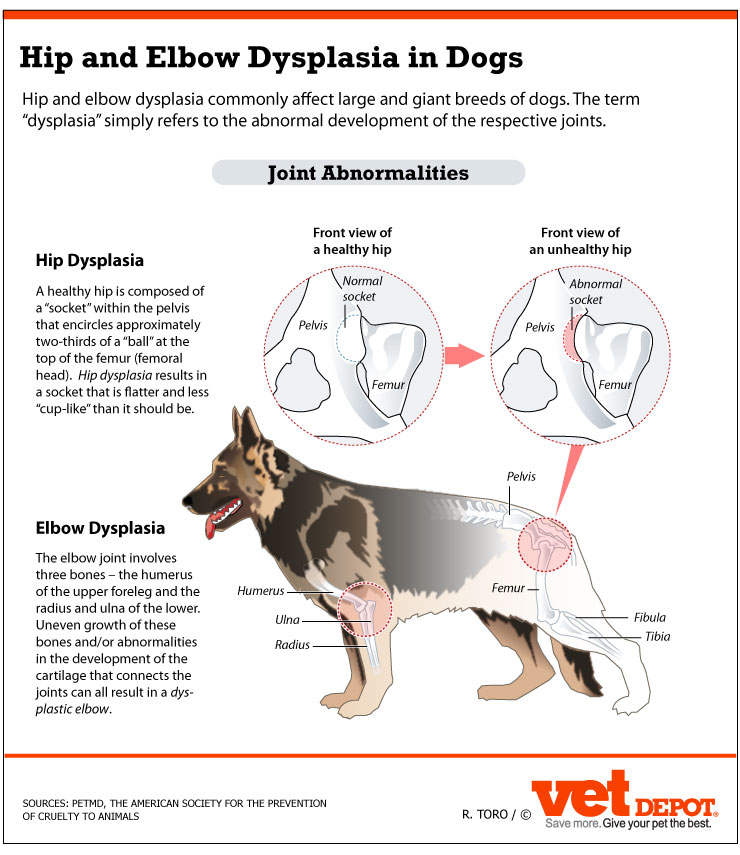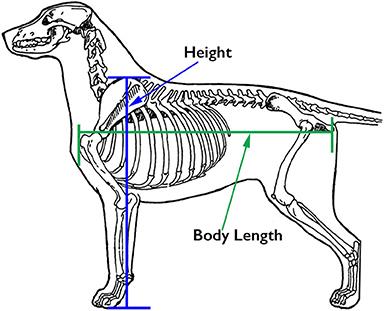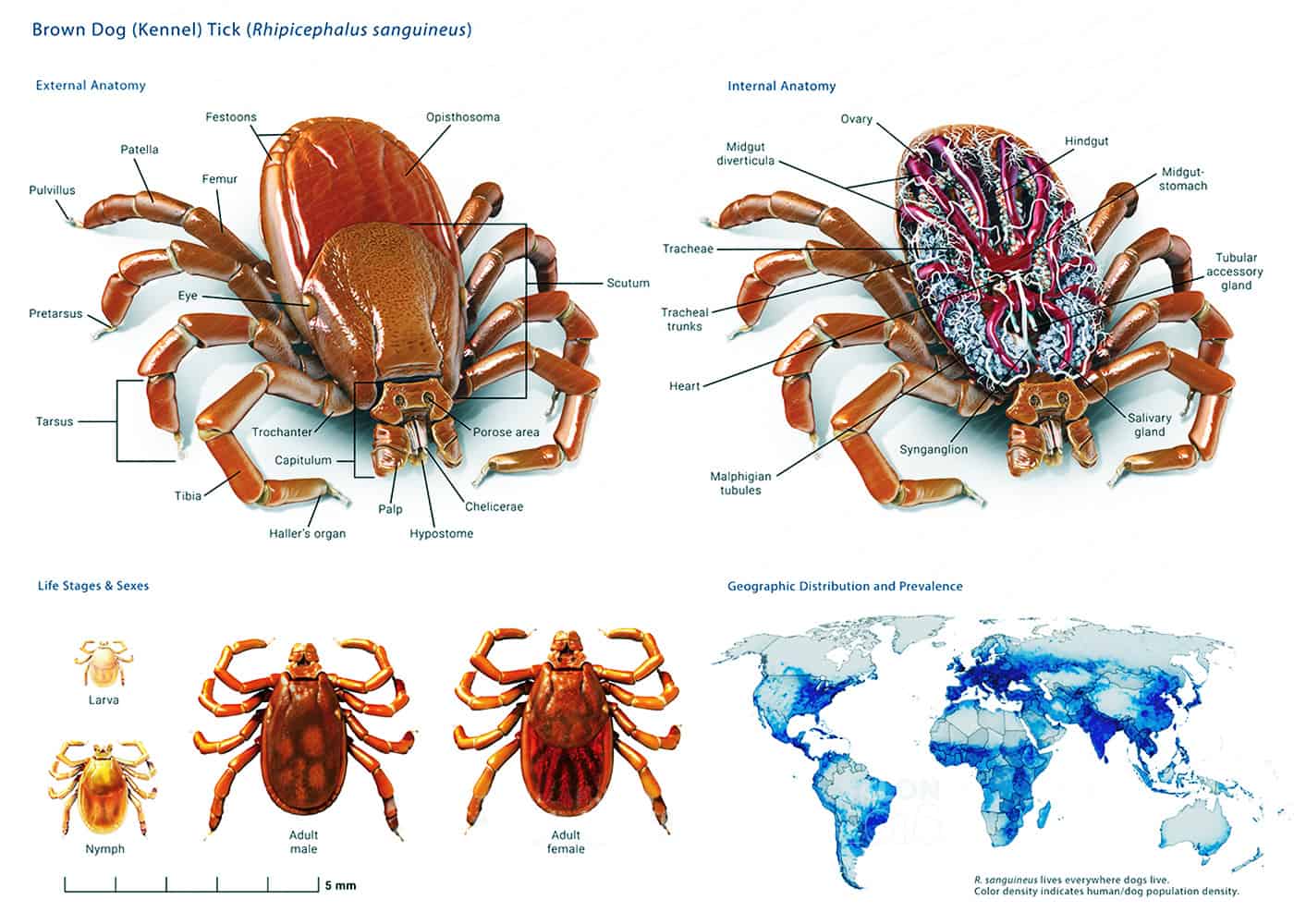Contents
- I. Introduction
- II. Structure of the Skeletal System
- III. Skeletal System Development in Dogs
- IV. Common Skeletal Disorders in Dogs
- V. Nutritional Requirements for a Healthy Skeletal System
- VI. Exercise and its Impact on the Skeletal System
- VII. Preventive Measures for Skeletal Health in Dogs
- VIII. Best Dog Food Brands for Skeletal Health
I. Introduction

Welcome to “The Skeletal System of Dogs: An In-Depth Look”! In this article, we will explore the fascinating world of a dog’s skeletal system, uncovering its structure, functions, and importance. Whether you are a dog owner, a veterinary professional, or simply curious about the anatomy of our furry friends, this article will provide you with valuable insights.
From providing support and protection to facilitating movement and producing blood cells, the skeletal system plays a crucial role in a dog’s overall health and well-being. Understanding the intricacies of this system can help us better care for our canine companions and identify potential issues that may arise.
In this comprehensive guide, we will delve into various aspects of a dog’s skeletal system, including:
- The composition of bones and their different types
- The structure and function of joints
- The role of ligaments and tendons in connecting bones and facilitating movement
- The importance of the spine and its different regions
- The skeletal differences between puppies and adult dogs
- Common skeletal disorders and how to recognize them
Throughout this article, we will provide detailed explanations, accompanied by illustrations and examples, to ensure a clear understanding of the topic. We will also address frequently asked questions and provide practical tips for maintaining a healthy skeletal system in dogs.
So, let’s embark on this educational journey and unravel the mysteries of the skeletal system of dogs together!
II. Structure of the Skeletal System

The skeletal system is a vital component of a dog’s body, providing support, protection, and mobility. It is made up of bones and joints, which work together to ensure the dog’s overall health and well-being.
A. Bones
1. Types of bones in a dog’s body
Dogs have various types of bones in their bodies, each serving a specific purpose. The main types of bones include:
- Long bones: These bones are found in the limbs and are responsible for providing support and facilitating movement.
- Flat bones: These bones, such as the scapula and pelvis, provide protection to vital organs and serve as attachment sites for muscles.
- Short bones: These bones, like those in the wrists and ankles, provide stability and support to the joints.
- Irregular bones: These bones, such as the vertebrae and facial bones, have unique shapes and functions.
Understanding the different types of bones in a dog’s body is essential in comprehending their overall skeletal structure and function.
2. Functions of bones in a dog’s body
Bones play crucial roles in a dog’s body, beyond just providing structural support. Some of the key functions of bones include:
- Support: Bones provide the framework that supports the dog’s body, allowing it to maintain its shape and posture.
- Protection: Bones protect vital organs, such as the heart, lungs, and brain, from external forces and injuries.
- Movement: Bones, along with muscles and joints, enable the dog to move and perform various activities.
- Production of blood cells: The bone marrow inside the bones is responsible for producing red and white blood cells, which are essential for the dog’s immune system and overall health.
- Mineral storage: Bones store minerals like calcium and phosphorus, which are necessary for maintaining strong and healthy bones.
Understanding the functions of bones helps us appreciate their importance in a dog’s overall well-being.
B. Joints
1. Types of joints in a dog’s body
Dogs have different types of joints that allow for smooth movement and flexibility. The main types of joints found in a dog’s body include:
- Hinge joints: These joints, like the elbow and knee joints, allow movement in only one direction, similar to a hinge.
- Ball-and-socket joints: These joints, such as the hip and shoulder joints, allow for a wide range of motion in multiple directions.
- Pivot joints: These joints, like the ones found in the neck, allow for rotational movement.
- Gliding joints: These joints, such as those in the wrists and ankles, allow for sliding and gliding movements.
The different types of joints in a dog’s body enable them to perform various activities, such as running, jumping, and playing.
2. Importance of healthy joints for a dog’s mobility
Healthy joints are crucial for a dog’s mobility and overall quality of life. When a dog’s joints are in good condition, they can move freely and without pain. Some key factors highlighting the importance of healthy joints include:
- Pain-free movement: Healthy joints ensure that a dog can move without experiencing discomfort or pain, allowing them to enjoy their daily activities.
- Flexibility and agility: Well-functioning joints enable dogs to be agile, flexible, and responsive, which is essential for their overall physical performance.
- Prevention of injuries: Strong and healthy joints reduce the risk of injuries, such as sprains, strains, and fractures, during physical activities.
- Improved overall well-being: When a dog’s joints are in optimal condition, they can maintain an active and fulfilling lifestyle, promoting their overall physical and mental well-being.
Ensuring the health and well-being of a dog’s joints is essential for promoting their mobility and overall quality of life.
The skeletal system, consisting of bones and joints, is a vital component of a dog’s body. Understanding the structure and functions of bones and joints helps us appreciate their importance in a dog’s overall health and well-being. By providing support, protection, and mobility, the skeletal system allows dogs to lead active and fulfilling lives.
III. Skeletal System Development in Dogs

The development of the skeletal system in dogs is a fascinating process that begins before birth and continues into the early stages of their lives. Understanding how the skeletal system develops is crucial for dog owners and breeders to ensure the proper growth and health of their furry companions. In this section, we will explore the prenatal and postnatal skeletal development in dogs, highlighting key factors that influence bone formation and growth.
A. Prenatal skeletal development
1. Formation of the skeleton in the womb
During the prenatal stage, a dog’s skeleton starts to form within the mother’s womb. The process begins with the development of cartilage, which serves as a framework for the bones to grow. Over time, the cartilage gradually ossifies, or hardens, into bone tissue. This transformation is a complex and intricate process that involves the deposition of minerals, such as calcium and phosphorus, to strengthen the bones.
2. Importance of proper nutrition during pregnancy
Proper nutrition plays a crucial role in the prenatal skeletal development of dogs. The mother’s diet should be rich in essential nutrients, including protein, calcium, and vitamin D, to support the growth and mineralization of the developing skeleton. Adequate nutrition ensures that the puppies receive the necessary building blocks for healthy bone formation, reducing the risk of skeletal abnormalities or deficiencies.
B. Postnatal skeletal development
1. Growth plates and their role in bone development
After birth, a dog’s skeletal development continues through the growth plates, also known as epiphyseal plates. These are areas of cartilage located at the ends of long bones, such as the femur and humerus. The growth plates are responsible for the lengthening and shaping of bones during the growth phase. As the dog matures, the growth plates gradually close, signaling the end of bone growth.
2. Factors affecting skeletal growth in puppies
Several factors can influence the skeletal growth of puppies. Genetics play a significant role, as certain breeds may have predispositions to specific skeletal conditions or growth patterns. Additionally, nutrition remains crucial during the postnatal stage, as a balanced diet with appropriate levels of protein, vitamins, and minerals supports optimal bone development. Exercise also plays a role, as excessive or improper physical activity can put stress on growing bones and joints, potentially leading to developmental issues.
IV. Common Skeletal Disorders in Dogs

A. Hip dysplasia
Hip dysplasia is a common skeletal disorder that affects many dogs, particularly large and giant breeds. It is a condition where the hip joint does not develop properly, leading to instability and eventual degeneration of the joint. This can cause pain, lameness, and difficulty in mobility for affected dogs.
1. Causes and risk factors
Hip dysplasia is believed to have both genetic and environmental factors. It is often inherited, meaning it can be passed down from parents to offspring. Certain breeds are more prone to hip dysplasia, including German Shepherds, Labrador Retrievers, and Golden Retrievers. Other risk factors include rapid growth, obesity, and improper nutrition during the puppy stage.
2. Symptoms and diagnosis
The symptoms of hip dysplasia can vary from mild to severe. Common signs include difficulty in rising or lying down, stiffness, lameness, and reluctance to exercise. Diagnosis is usually made through a combination of physical examination, X-rays, and sometimes additional imaging tests like CT scans or MRI.
3. Treatment options and management
While hip dysplasia cannot be cured, there are several treatment options available to manage the condition and improve the dog’s quality of life. Non-surgical approaches include weight management, exercise modification, physical therapy, and the use of pain medications and supplements. In more severe cases, surgery may be recommended, such as total hip replacement or femoral head ostectomy.
B. Osteoarthritis
Osteoarthritis, also known as degenerative joint disease, is another common skeletal disorder in dogs. It is a progressive condition where the cartilage in the joints wears down over time, leading to inflammation, pain, and reduced mobility.
1. Degenerative joint disease in dogs
Osteoarthritis can develop as a result of various factors, including joint trauma, genetic predisposition, and aging. It can affect any joint in the body, but commonly affects weight-bearing joints such as the hips, knees, and elbows. Over time, the cartilage becomes thinner and less able to absorb shock, leading to bone-on-bone contact and the formation of bone spurs.
2. Signs and symptoms
Dogs with osteoarthritis may exhibit signs such as limping, stiffness, difficulty in getting up or lying down, decreased activity levels, and reluctance to jump or climb stairs. They may also show signs of pain, such as vocalization or aggression when touched in certain areas. It is important to note that dogs may try to hide their pain, so subtle changes in behavior should also be considered.
3. Treatment and pain management strategies
While there is no cure for osteoarthritis, there are various treatment options available to manage the condition and alleviate pain. These include weight management, exercise modification, physical therapy, non-steroidal anti-inflammatory drugs (NSAIDs), joint supplements, and alternative therapies like acupuncture or laser therapy. In some cases, surgical interventions such as joint debridement or joint replacement may be considered.
V. Nutritional Requirements for a Healthy Skeletal System

When it comes to maintaining a healthy skeletal system in dogs, providing the right nutrition is crucial. Just like humans, dogs require specific nutrients to support the growth and maintenance of strong bones. In this section, we will explore the essential nutrients for bone health and the recommended diet for maintaining strong bones in dogs.
A. Essential nutrients for bone health
1. Calcium and phosphorus:
Calcium and phosphorus are two of the most important minerals for bone health in dogs. Calcium provides the structural framework for bones, while phosphorus plays a key role in bone mineralization. These minerals work together to support bone growth and development.
2. Vitamins D and K:
Vitamins D and K also play a crucial role in maintaining a healthy skeletal system in dogs. Vitamin D helps regulate calcium and phosphorus levels in the body, ensuring proper absorption and utilization of these minerals. Vitamin K, on the other hand, is involved in the production of proteins that are essential for bone formation.
B. Recommended diet for maintaining strong bones in dogs
1. Commercial dog food options:
When it comes to providing the right nutrition for your dog’s skeletal system, commercial dog food can be a convenient and reliable option. Look for dog food brands that specifically mention the inclusion of essential nutrients like calcium, phosphorus, vitamins D, and K. These nutrients should be listed in the ingredients or guaranteed analysis section of the dog food packaging.
2. Homemade diet considerations:
If you prefer to prepare homemade meals for your dog, it’s important to ensure that the diet is well-balanced and meets all the nutritional requirements. Consult with a veterinarian or a veterinary nutritionist to create a homemade diet plan that includes the right balance of calcium, phosphorus, and vitamins D and K. They can provide guidance on the appropriate food sources and portion sizes to maintain strong bones in your dog.
Remember, every dog is unique, and their nutritional needs may vary based on factors such as age, breed, size, and overall health. It’s always best to consult with a veterinarian to determine the specific nutritional requirements for your dog’s skeletal system.
VI. Exercise and its Impact on the Skeletal System
Regular exercise plays a crucial role in maintaining the overall health and well-being of dogs, including their skeletal system. Just like humans, dogs need physical activity to keep their bones strong and healthy. In this section, we will explore the benefits of regular exercise for bone health, different types of exercises that promote skeletal strength in dogs, and exercise guidelines for dogs at different life stages.
A. Benefits of regular exercise for bone health
Exercise not only helps dogs maintain a healthy weight and cardiovascular fitness but also has a positive impact on their skeletal system. Here are some key benefits of regular exercise for bone health:
- Increased bone density: Physical activity stimulates bone remodeling, leading to increased bone density. This helps prevent conditions like osteoporosis and osteopenia in dogs.
- Improved joint health: Exercise helps lubricate the joints, reducing the risk of joint stiffness and arthritis. It also strengthens the muscles around the joints, providing better support and stability.
- Enhanced bone strength: Weight-bearing exercises, such as walking, running, and jumping, put stress on the bones, stimulating them to become stronger and more resilient.
- Prevention of age-related bone loss: As dogs age, they may experience a natural decline in bone mass. Regular exercise can help slow down this process and minimize the risk of fractures and bone-related issues.
It is important to note that the intensity and duration of exercise should be tailored to the individual dog’s age, breed, and overall health condition. Consulting with a veterinarian is recommended to determine the appropriate exercise regimen for your furry friend.
B. Types of exercises that promote skeletal strength in dogs
When it comes to promoting skeletal strength in dogs, incorporating a variety of exercises is key. Here are some types of exercises that can help strengthen your dog’s bones:
- Walking: Regular walks provide low-impact exercise that benefits both the cardiovascular system and the skeletal system. Aim for at least 30 minutes of brisk walking every day.
- Running and jogging: For more active dogs, running and jogging can provide a higher level of impact on the bones. However, it is important to gradually increase the intensity and distance to avoid overexertion or injury.
- Jumping and agility training: Activities that involve jumping, such as agility training or playing fetch, help improve bone density and strength. These exercises also engage the muscles, promoting overall fitness.
- Swimming: Swimming is a low-impact exercise that is gentle on the joints while providing a full-body workout. It can be particularly beneficial for dogs with joint issues or those recovering from injuries.
Remember to always consider your dog’s individual capabilities and limitations when choosing exercises. If your dog has any pre-existing health conditions or injuries, consult with a veterinarian or a professional dog trainer to ensure the exercises are safe and appropriate.
C. Exercise guidelines for different life stages of dogs
The exercise needs of dogs vary depending on their life stages. Here are some general exercise guidelines to consider:
- Puppies: Puppies have a lot of energy and require regular playtime and short walks to burn off excess energy. However, it is important to avoid excessive exercise or high-impact activities that may strain their developing bones and joints.
- Adult dogs: Adult dogs generally require more exercise to maintain their overall health and prevent weight gain. Aim for a combination of daily walks, active play sessions, and mentally stimulating activities.
- Senior dogs: As dogs age, their exercise needs may decrease due to reduced mobility or underlying health conditions. However, it is still important to provide regular low-impact exercise to keep their muscles and joints active. Gentle walks, swimming, and light play sessions can be beneficial.
Always monitor your dog during exercise and adjust the intensity or duration as needed. If you notice any signs of fatigue, pain, or discomfort, consult with a veterinarian to ensure your dog’s exercise routine is appropriate for their age and health condition.
Remember, regular exercise is not only beneficial for your dog’s skeletal system but also contributes to their overall well-being. By providing appropriate physical activity, you can help your furry companion maintain strong and healthy bones throughout their life.
VII. Preventive Measures for Skeletal Health in Dogs
Dogs are active and agile creatures, relying on their skeletal system to support their movements and overall well-being. As a responsible pet owner, it is crucial to take preventive measures to ensure the skeletal health of your furry companion. In this section, we will explore some key strategies that can help maintain the skeletal health of dogs.
A. Regular veterinary check-ups and screenings
Regular veterinary check-ups play a vital role in identifying and addressing any potential skeletal health issues in dogs. During these check-ups, a veterinarian will conduct a thorough physical examination, which may include assessing the dog’s gait, joint mobility, and overall musculoskeletal condition. They may also recommend additional screenings, such as X-rays or blood tests, to detect any underlying skeletal abnormalities or conditions.
By scheduling regular check-ups, you can stay proactive in monitoring your dog’s skeletal health and catch any potential issues early on. Early detection allows for prompt intervention and treatment, which can prevent further complications and ensure the overall well-being of your furry friend.
B. Weight management and its impact on skeletal health
Weight management plays a crucial role in maintaining the skeletal health of dogs. Excess weight can put unnecessary strain on the joints and bones, leading to various skeletal problems, including arthritis and hip dysplasia. Therefore, it is essential to keep your dog at a healthy weight to minimize the risk of skeletal issues.
Consult with your veterinarian to determine the ideal weight range for your dog’s breed and size. They can provide guidance on appropriate portion sizes, feeding schedules, and suitable exercise routines to help your dog maintain a healthy weight. Regular exercise not only aids in weight management but also promotes overall musculoskeletal strength and flexibility.
Remember, every dog is unique, and their nutritional needs may vary. It is crucial to provide a balanced diet that meets their specific requirements to support their skeletal health.
C. Environmental considerations for preventing injuries
The environment in which your dog lives and plays can significantly impact their skeletal health. Taking certain precautions can help prevent injuries and minimize the risk of skeletal damage.
1. Provide a safe and secure living space: Ensure that your dog’s living area is free from hazards that could cause falls or accidents. Remove any sharp objects, secure loose wires or cables, and create a comfortable space that encourages your dog to move around freely without the risk of injury.
2. Use appropriate flooring: Opt for flooring surfaces that offer traction and minimize the risk of slips and falls. Smooth surfaces like tiles or hardwood floors can be slippery for dogs, especially those with existing skeletal issues. Consider using rugs or mats in areas where your dog spends most of their time to provide better grip and stability.
3. Avoid excessive jumping or rough play: Dogs love to jump and engage in rough play, but these activities can put strain on their joints and bones. Discourage excessive jumping from heights or engaging in rough play with larger or more energetic dogs, as it can increase the risk of skeletal injuries.
4. Provide proper bedding and support: A comfortable and supportive bed is essential for dogs, especially those with skeletal issues or older dogs. Choose a bed that provides adequate cushioning and support for their joints and spine. Orthopedic beds are specifically designed to alleviate pressure on the skeletal system and can be beneficial for dogs with existing skeletal conditions.
By implementing these preventive measures, you can significantly contribute to maintaining the skeletal health of your beloved canine companion. Regular veterinary check-ups, weight management, and creating a safe environment are key factors in ensuring your dog’s skeletal well-being.
VIII. Best Dog Food Brands for Skeletal Health
As a dog owner and avid animal lover, I understand the importance of providing our furry friends with the best nutrition possible. When it comes to skeletal health, choosing the right dog food can make a significant difference in their overall well-being. In this section, I will share my top recommendations for dog food brands that prioritize skeletal health.
1. Acme Pet Nutrition
Acme Pet Nutrition is a brand that has gained a reputation for its commitment to providing high-quality dog food. Their formulas are carefully crafted to support skeletal health, ensuring that your furry companion receives the necessary nutrients for strong bones and joints. With a focus on natural ingredients and balanced nutrition, Acme Pet Nutrition is a top choice for dog owners who prioritize their pet’s skeletal health.
2. Healthy Paws
Healthy Paws is another brand that stands out when it comes to promoting skeletal health in dogs. Their dog food formulas are packed with essential nutrients, including calcium, phosphorus, and vitamin D, which are vital for bone health. Additionally, Healthy Paws uses high-quality ingredients and avoids artificial additives, making it a reliable choice for pet owners who want to provide their dogs with optimal skeletal support.
3. NutriBone
NutriBone is a brand that specializes in formulating dog food specifically designed to support skeletal health. Their recipes are enriched with glucosamine and chondroitin, which are known to promote joint health and reduce the risk of skeletal issues. NutriBone also focuses on using premium ingredients and avoiding fillers, ensuring that your dog receives the best possible nutrition for their bones and joints.
4. BoneStrong
BoneStrong is a dog food brand that lives up to its name. Their formulas are carefully crafted to provide the essential nutrients needed for strong and healthy bones. With a blend of vitamins, minerals, and antioxidants, BoneStrong dog food supports skeletal health and overall well-being. Additionally, their recipes are free from artificial colors, flavors, and preservatives, making it a trustworthy choice for dog owners who prioritize natural and nutritious options.
5. VitalBone
VitalBone is a brand that understands the importance of skeletal health in dogs. Their dog food formulas are specially formulated to provide the necessary nutrients for strong bones and joints. With a focus on natural ingredients and balanced nutrition, VitalBone ensures that your furry friend receives the best possible support for their skeletal system. Their recipes are also free from common allergens, making it suitable for dogs with dietary sensitivities.
When choosing a dog food brand for skeletal health, it’s important to consider your dog’s specific needs and consult with your veterinarian. Remember that each dog is unique, and what works for one may not work for another. By prioritizing your dog’s skeletal health and selecting a reputable brand, you can ensure that they live a happy and healthy life.
